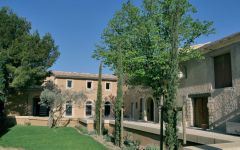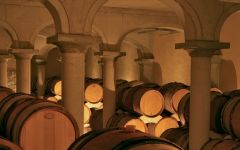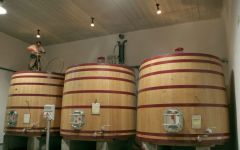Domaine de Beaurenard Chateauneuf-du-Pape 2000
-
Robert
Parker

Product Details
Your Rating
Somm Note
Winemaker Notes
The crop is picked and sorted manually. The grapes are destemmed and slightly crushed, then vatted for a long period as tradition dictates, to extract as gently as possible the phenolic compounds: the tannins and anthocyanins that provide the wine's colour and health-giving attributes.
We make very concentrated wines especially suited to prolonged ageing; but they are also highly pleasurable to drink young. During the maturation process - 9 to 15 months in oak casks and barrels - we continue to refine the wines' structure in order to obtain a very harmonious, well-balanced wine.
"The classic, modern-styled 2000 Chateauneuf du Pape has not lost any of its Provencal heart and soul. Deep ruby/purple-colored, with a sumptuously sweet perfume of black cherries, pepper, spice, and subtle notes of vanilla as well as chocolate, this full-bodied, layered, intense 2000 possesses low acidity and great purity. This is a sexy, opulent Chateauneuf to drink now and over the next 12-15 years."
-The Wine Advocate
Professional Ratings
- Robert Parker's Wine Advocate
Other Vintages
2020-
Jeb
Dunnuck - Vinous
-
Wine
Spectator
-
Jeb
Dunnuck -
Wine
Spectator -
James
Suckling -
Robert
Parker
- Decanter
-
Wine
Spectator -
Robert
Parker -
Jeb
Dunnuck
-
Jeb
Dunnuck -
Robert
Parker -
James
Suckling -
Wine
Spectator
-
Robert
Parker -
Wine
Spectator -
James
Suckling -
Jeb
Dunnuck
-
Wine
Spectator -
Jeb
Dunnuck -
James
Suckling
-
Wine
Spectator
-
Wine
Spectator
-
Wine
Spectator
-
Robert
Parker
-
Wine
Spectator
-
Robert
Parker
-
Wine
Spectator
-
Wine
Spectator -
Robert
Parker
-
Wine
Spectator
-
Wine
Spectator
-
Wine
Spectator -
Robert
Parker







The Coulons have estate-bottled their wines since the early 1900’s. Paul Coulon's father and grandfather were instrumental in creating the regulations of the Appellation Contrôlée system (Chateauneuf du Pape was France's first appellation contrôlée, in 1929). Detail oriented, meticulous to the point of perfectionism, visitors can peruse not only the informative Musée du Vin below their Rasteau vineyard, but detailed volumes for each vintage with ground temperatures, rainfall, hours of sunlight, etc.
Domaine de Beaurenard portfolio includes: Cotes du Rhone Rouge & Rose, Cotes du Rhone Villages Rasteau, Chateauneuf du Pape Rouge & Blanc and Chateauneuf du Pape Cuvee Boisrenard which is consistently one of Robert Parker and Stephen Tanzer's most highly rated Rhone wines.

With bold fruit flavors and accents of sweet spice, Grenache, Syrah and Mourvèdre form the base of the classic Rhône Red Blend, while Carignan, Cinsault and Counoise often come in to play. Though they originated from France’s southern Rhône Valley, with some creative interpretation, Rhône blends have also become popular in other countries. Somm Secret—Putting their own local spin on the Rhône Red Blend, those from Priorat often include Merlot and Cabernet Sauvignon. In California, it is not uncommon to see Petite Sirah make an appearance.

Famous for its full-bodied, seductive and spicy reds with flavor and aroma characteristics reminiscent of black cherry, baked raspberry, garrigue, olive tapenade, lavender and baking spice, Châteauneuf-du-Pape is the leading sub-appellation of the southern Rhône River Valley. Large pebbles resembling river rocks, called "galets" in French, dominate most of the terrain. The stones hold heat and reflect it back up to the low-lying gobelet-trained vines. Though the galets are typical, they are not prominent in every vineyard. Chateau Rayas is the most obvious deviation with very sandy soil.
According to law, eighteen grape varieties are allowed in Châteauneuf-du-Pape and most wines are blends of some mix of these. For reds, Grenache is the star player with Mourvedre and Syrah coming typically second. Others used include Cinsault, Counoise and occasionally Muscardin, Vaccarèse, Picquepoul Noir and Terret Noir.
Only about 6-7% of wine from Châteauneuf-du-Pape is white wine. Blends and single-varietal bottlings are typically based on the soft and floral Grenache Blanc but Clairette, Bourboulenc and Roussanne are grown with some significance.
The wine of Chateauneuf-du-Pape takes its name from the relocation of the papal court to Avignon. The lore says that after moving in 1309, Pope Clément V (after whom Chateau Pape-Clément in Pessac-Léognan is named) ordered that vines were planted. But it was actually his successor, John XXII, who established the vineyards. The name however, Chateauneuf-du-Pape, translated as "the pope's new castle," didn’t really stick until the 19th century.
